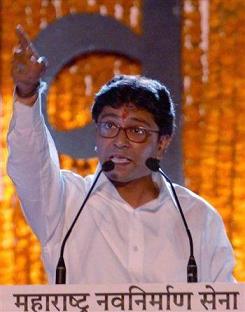![]() With social networks (SocNets) and online life taking precedence over real life (offline) face to face meetings, there are a number of changes that all of us are going through without us even realizing it. The convenience of getting connected to people without physically moving anywhere is probably a good thing to have, so is the power to get updates and happenings around your near and dear ones’ lives. SocNets also help people find jobs, promote their products and services etc. I am not really overlooking all those good aspects. However, there are so many disadvantages that probably will make the facebookers altogether different human beings who might be losing certain good things and experiences in life.
With social networks (SocNets) and online life taking precedence over real life (offline) face to face meetings, there are a number of changes that all of us are going through without us even realizing it. The convenience of getting connected to people without physically moving anywhere is probably a good thing to have, so is the power to get updates and happenings around your near and dear ones’ lives. SocNets also help people find jobs, promote their products and services etc. I am not really overlooking all those good aspects. However, there are so many disadvantages that probably will make the facebookers altogether different human beings who might be losing certain good things and experiences in life.
Negative impacts of facebook (and SocNets in general)
I am not sure if everyone feels bad about the negative aspects of SocNets, but I personally feel nervous at times at the very thought of exposing and risking everything online. The following are some of the disadvantages of social networking.
Lack of privacy
Even with the best privacy settings available, you are still airing your private information to the web. And sometimes your friends’ friend is not exactly the nicest person around. For example, I do have a lot of people from the blogging world connecting to me, but my real life friends may not like me sharing their information with these strangers, right? In a way, everybody out there on a SocNet is letting each other dig into others private life.
Facebook is selling you
An extension to the privacy problem is the way in which facebook is collecting your data and selling it to external applications and organizations. This include, facebook games, apps, and agencies who are interested in the demographic data of millions of people. We even share our photographs online via facebook on which they have the full rights to share with others.
It’s a relationship spoiler
With all these SocNets coming in, people have stopped connecting with each other via visiting them. People even hesitate to pick the phone and talk to their dear ones. Please note that humans are originally programmed to communicate with each other via our five senses and not via keyboard and mouse.
If things go at this pace, it may be even possible that husband and wife and their kids will sit in their respective rooms under the same roof and communicate via facebook.
The other problem is that, even though, it’s easier to be in touch with your facebook friends initially, as the list grows you have to either find more time to track everyone, or neglect many of them. And many times, your priority friends or relatives get missed out.
Reduced soft and communication skills
Many people who are addicted to facebook are either already introverts or they are becoming one. They are losing their communication and presentation skills further by only typing in stuff.
Wasting human resource
Mobile phones and social networks are two major challenges that many employers are facing at the moment as their employees’ productive time at work is rapidly reducing with all these distractions. In countries like India, the social networks and mobile phones are even used for the wrong purposes. Some people use social networks like IMs (Instant messengers) just like the SMS misuse in India. And when the mobile phones are enabled with facebook, it’s a double whammy! Basically, even while on the move, people are distracted.
Cyber stalking
With people connecting with real strangers, the number of cyber stalking and related crime rates are growing at an alarming pace. Many times it’s the teenagers who get cheated when they actually meet the real face behind facebook. There’s been cases of murder, cheating and blackmailing, after people got too close with their facebook lovers. Of course, there are cases with happy endings as well.
In most cases the teens’ parents don’t even know with whom they are communicating and what all activities are they doing online. Inability to monitor kids completely is a big issue. I mean, they expose themselves to the whole world but their parents.
Lighter side of facebook
If used in moderation, facebook or any SocNets can be fun provided that you are using it at a predetermined time and duration without really getting addicted to it. The following are some of the standard behaviors of facebook addicts.
- Standard comments on photos (especially in India): ‘Very nice family photo, all of you look great 🙂‘
- Some people join facebook only to keep ‘like’ing others updates and photos as if their puters don’t have keyboard. Some others don’t even ‘like’ people they just created a facebook account to watch what others are up to
- Good looking women – hoping that they have posted their original photo – generally get a lot of friend requests – surprisingly even from married middle-aged men
- Some people use FB only to redirect their tweets (from Twitter) and spam links to facebook
- Things that girl and boy wouldn’t talk directly face to face is done via facebook. In other words, many facebook super heroes are super zeroes in real life
- …add yours here…
Over to you
Could you share what have been your facebook experience so far? Do you think, social networks are causing some social problems along with the advantages that they offer? Are you addicted to facebook?
Happy networking!

 As we all read and saw in the last two years, Pramodh Muthalik and his organization Sri Ram Sena vandalized the pubs in Mangalore and beaten up lady guests there. He is a Hindu extremist, in my opinion, who claims that he’s trying to protect the Bharat Sanskar (Indian culture) in the interest of our nation. Mr. Muthalik, nobody from the government or court has hired you to protect our culture and hence you better mind your own business. Moreover, as per a recent sting operation, your goons disclosed that you can beat up anybody and smash up anybody or any organization if you are paid bucks in lakhs. Hence you are one of the top among in my hate list (and I am sorry to have given you some more publicity to you via this blog post)
As we all read and saw in the last two years, Pramodh Muthalik and his organization Sri Ram Sena vandalized the pubs in Mangalore and beaten up lady guests there. He is a Hindu extremist, in my opinion, who claims that he’s trying to protect the Bharat Sanskar (Indian culture) in the interest of our nation. Mr. Muthalik, nobody from the government or court has hired you to protect our culture and hence you better mind your own business. Moreover, as per a recent sting operation, your goons disclosed that you can beat up anybody and smash up anybody or any organization if you are paid bucks in lakhs. Hence you are one of the top among in my hate list (and I am sorry to have given you some more publicity to you via this blog post) Shiv Sena supremo, Mr. Bal Thackeray, it is quite natural that he had to come up with his own regional political set up – MNS (Maharashtra Navnirman Sena) – to take on non-Mumbaikars in Mumbai. While Mr. Bal Thackeray in his early life had at least certain principles in life and even possessed some skills (cartoonist) in the field of journalism, Mr. Raj Thackeray is someone who just thrives on his hate speeches and provoking acts. And hence he’s the #2 in my hate list.
Shiv Sena supremo, Mr. Bal Thackeray, it is quite natural that he had to come up with his own regional political set up – MNS (Maharashtra Navnirman Sena) – to take on non-Mumbaikars in Mumbai. While Mr. Bal Thackeray in his early life had at least certain principles in life and even possessed some skills (cartoonist) in the field of journalism, Mr. Raj Thackeray is someone who just thrives on his hate speeches and provoking acts. And hence he’s the #2 in my hate list. Well, Sreesanth is not as bad as any of the two listed above. But he’s a great example of indiscipline, tactlessness and
Well, Sreesanth is not as bad as any of the two listed above. But he’s a great example of indiscipline, tactlessness and  (Remember, what you studied in physics some years back?). To torture the people of India even more, he sports a custom made bronze coloured poodle wig, a funny cap that doesn’t match his age or looks and multiple layers of clothes made from cotton, synthetic to leather. He usually roams around with gorgeous teenagers of his daughter’s age and that makes me hate him even more. Of late, he has started acting (if you can call that acting) as well. God save Indian music and bollywood movies!
(Remember, what you studied in physics some years back?). To torture the people of India even more, he sports a custom made bronze coloured poodle wig, a funny cap that doesn’t match his age or looks and multiple layers of clothes made from cotton, synthetic to leather. He usually roams around with gorgeous teenagers of his daughter’s age and that makes me hate him even more. Of late, he has started acting (if you can call that acting) as well. God save Indian music and bollywood movies! I hate Anu Malik because he is one of those fools who claims to compose inspired music but thus far whatever he has done is crap. If he has done anything good, obviously that is stolen. Moreover, I hate him for his singing in his own album and of late for being in the Indian Idol judges panel. He is also the epitome of arrogance – arrogance of a semi literate man in his discipline. He should learn to be as humble as someone like A.R. Rehman.
I hate Anu Malik because he is one of those fools who claims to compose inspired music but thus far whatever he has done is crap. If he has done anything good, obviously that is stolen. Moreover, I hate him for his singing in his own album and of late for being in the Indian Idol judges panel. He is also the epitome of arrogance – arrogance of a semi literate man in his discipline. He should learn to be as humble as someone like A.R. Rehman. are after page 3 journalism and sensational news rather than gaining knowledge and the right perspective. So, Mr. Arnab, though you possess good skills, it is never properly used. And despite your producer’s demands, you could still behave better with your guests (especially the elder ones) who have seen the world much more than you.
are after page 3 journalism and sensational news rather than gaining knowledge and the right perspective. So, Mr. Arnab, though you possess good skills, it is never properly used. And despite your producer’s demands, you could still behave better with your guests (especially the elder ones) who have seen the world much more than you. Well, this one was a tough one – a case of one of my idols getting into the hate list overnight. In one of the biggest corporate frauds in India, the (A)Satyam Computers founder admitted in 2008 that he and his company have been involving in manipulating the company’s results and cheated its investors. While, Mr.Raju did it all for his family run business, what he did is to tarnish the India story and spoilt trust among investors from India and abroad. An unfortunate case but a big time fraud person in my list.
Well, this one was a tough one – a case of one of my idols getting into the hate list overnight. In one of the biggest corporate frauds in India, the (A)Satyam Computers founder admitted in 2008 that he and his company have been involving in manipulating the company’s results and cheated its investors. While, Mr.Raju did it all for his family run business, what he did is to tarnish the India story and spoilt trust among investors from India and abroad. An unfortunate case but a big time fraud person in my list. Peanut Masala is more of a South Indian snack. Well, it is not exactly my favorite food but my vegetarian friends say that it is one of those few veg things that goes well with alcoholic drinks. And as a matter of fact, it does. It can also serve the purpose of an appetizer or starter at times.
Peanut Masala is more of a South Indian snack. Well, it is not exactly my favorite food but my vegetarian friends say that it is one of those few veg things that goes well with alcoholic drinks. And as a matter of fact, it does. It can also serve the purpose of an appetizer or starter at times. As usual the vote bank politicians on the UPA alliance, opposition leaders and the left have voiced their protest. They claim that they are ‘with the people of India’ and whole lot of other crap. Two of the most politically spoiled states in India – The West Bengal and Kerala – have readily jumped on to ‘celebrate’ the situation with a ‘Hartal’ (strike). But do they even know how pampered the people of India already are how much they are misusing one of the most limited natural resources such as petrol (LPG and diesel as well)?
As usual the vote bank politicians on the UPA alliance, opposition leaders and the left have voiced their protest. They claim that they are ‘with the people of India’ and whole lot of other crap. Two of the most politically spoiled states in India – The West Bengal and Kerala – have readily jumped on to ‘celebrate’ the situation with a ‘Hartal’ (strike). But do they even know how pampered the people of India already are how much they are misusing one of the most limited natural resources such as petrol (LPG and diesel as well)?